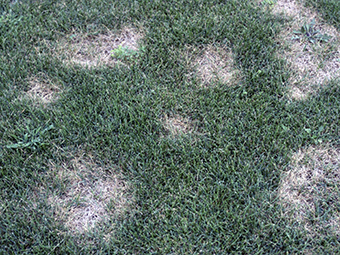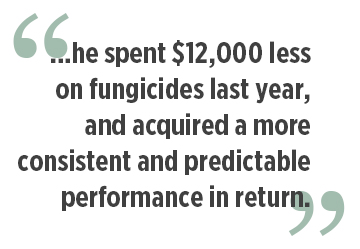 For nearly seven years, Todd Kochanowski, the superintendent at Temecula, Calif.’s Temecula Creek Inn, has tried to remove summer patch, anthracnose and rapid blight from the inn’s 27-hole championship golf course with little to no success.
For nearly seven years, Todd Kochanowski, the superintendent at Temecula, Calif.’s Temecula Creek Inn, has tried to remove summer patch, anthracnose and rapid blight from the inn’s 27-hole championship golf course with little to no success.

Todd Kochanowski
He attempted virtually every method he could think of, but the long southern California summers were too difficult to combat. But then he discovered a new fungicide program last spring — one that would not only combat the diseases his 5.25 acres of Poa greens encountered every summer, but remove them entirely.
To ensure the best conditions possible, Kochanowski followed the recommended calendar dates and rotations of Syngenta’s Green Poa Annua West 14-day California rotation. He began applying the program in April 2017, hoping to prevent summer patch, which usually occurs after core aerification. He first applied Banner Maxx, followed by a combined application of Daconil Action and Velista, and then a 14-day rotation of Heritage Action.
Optimal performance with proper programming

Summer patch (Magnaporthe poae) on Poa annua
The combination helped Kochanowski avoid summer patch outbreaks for the first time in his seven-year tenure. He noticed the same results with anthracnose, which also poses a significant threat to the course’s Poa greens, as temperatures tend to rise to triple digits for long stretches throughout the summer.
“The combined application of Daconil Action and Velista, as well as Heritage Action and Velista in the final stretch of the summer, was a true test for our greens,” Kochanowski says. “But, even with typical end of summer root decline, we didn’t experience any anthracnose in 2017.”
Of the three primary diseases Temecula Creek Inn encounters annually, rapid blight may be the most impactful, as 18 of the inn’s 27 holes are native, push up greens. Salts must be monitored and controlled carefully to ensure they don’t reach toxic levels and lead to rapid blight susceptibility.
 Unlike past summers, in which toxicity rose substantially and leaching wasn’t an option due to scheduled events, a timely application of the Syngenta rotation provided Kochanowski the insurance he needed to control rapid blight until venting and leaching could be properly executed.
Unlike past summers, in which toxicity rose substantially and leaching wasn’t an option due to scheduled events, a timely application of the Syngenta rotation provided Kochanowski the insurance he needed to control rapid blight until venting and leaching could be properly executed.
“For the first summer that I can remember, we were rapid blight free,” he adds.

Less stress all around
 In addition to preventing summer patch and anthracnose, and eliminating rapid blight, the Syngenta rotation — particularly Heritage Action — completely averted drought stress on each of the greens, an issue Kochanowski typically encounters in the late summer and early fall. During that time of year, temperatures and winds are generally very high, resulting in spotty overhead irrigation coverage.
In addition to preventing summer patch and anthracnose, and eliminating rapid blight, the Syngenta rotation — particularly Heritage Action — completely averted drought stress on each of the greens, an issue Kochanowski typically encounters in the late summer and early fall. During that time of year, temperatures and winds are generally very high, resulting in spotty overhead irrigation coverage.
When all was said and done, Kochanowski not only avoided the three most common diseases that harm his Poa greens, but he also spent $12,000 less on fungicides last year, when compared to 2016, and acquired a much more consistent and predictable performance in return.
“The programs I’ve used in the past were overly complicated, leaving me to wonder if I had chosen the right rotation to fight the battle,” he explains. “But the Syngenta rotation has taken most of the guesswork out so that I can spend more time focusing on other issues instead.”

Tweet @SyngentaTurf and tell us how you #ConditionPerformRecover.
Plants work to protect themselves from pathogens all the time. Heritage Action fungicide offers hybrid technology that couples the proven disease control of Heritage fungicide with a boost of Acibenzolar-s-methyl (ASM) for enhanced biotic and abiotic stress management — enabling the plant better protect itself. Complete the Heritage Action Learning Module and learn about ASM’s impact on biotic and abiotic stress control.
This page was produced by North Coast Media’s content marketing staff in collaboration with Syngenta. NCM Content Marketing connects marketers to audiences and delivers industry trends, business tips and product information. The Golfdom editorial staff did not create this content.
Photo: Mary Ann Hansen, Virginia Polytechnic Institute and State University, Bugwood.org






